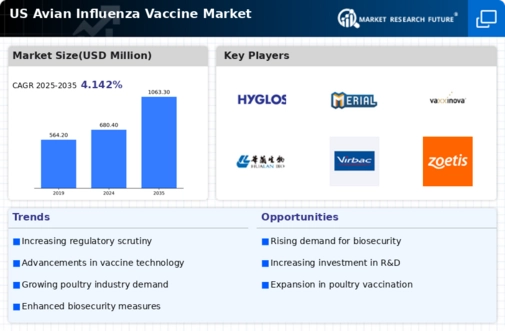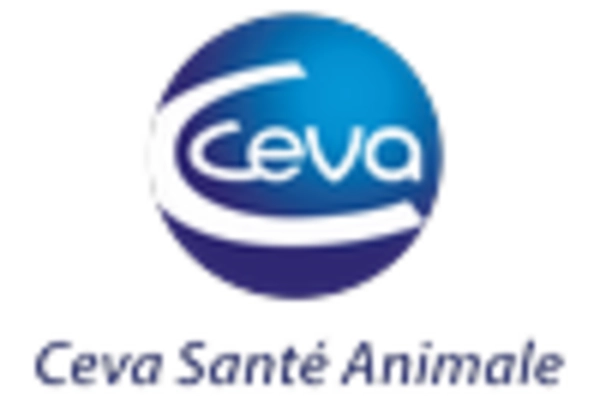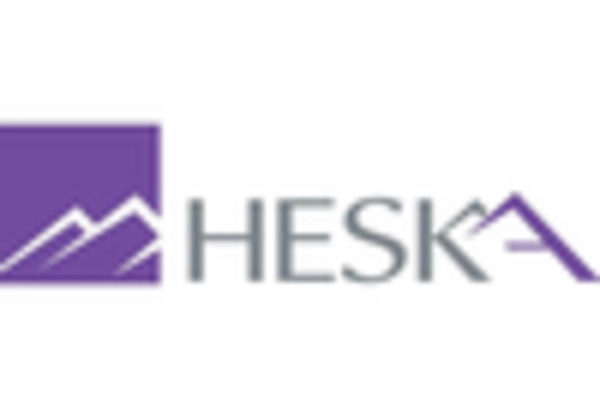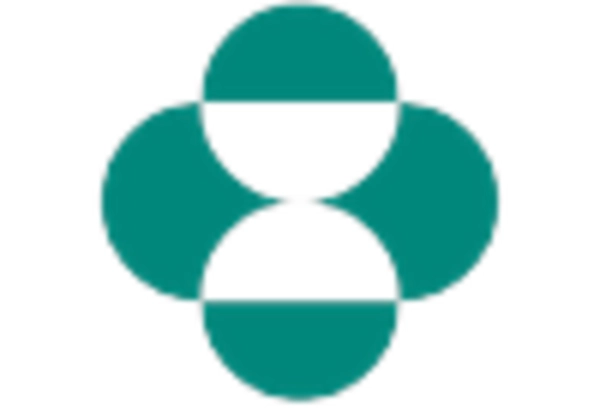The avian influenza-vaccine market is characterized by a competitive landscape that is increasingly shaped by innovation, strategic partnerships, and regional expansion. Key players such as Boehringer Ingelheim (DE), Merck Animal Health (US), and Zoetis (US) are at the forefront, each adopting distinct strategies to enhance their market presence. Boehringer Ingelheim (DE) focuses on research and development, aiming to introduce next-generation vaccines that address emerging strains of avian influenza. Meanwhile, Merck Animal Health (US) emphasizes strategic collaborations with research institutions to bolster its vaccine portfolio, while Zoetis (US) leverages its extensive distribution network to ensure rapid market penetration and accessibility of its products. Collectively, these strategies contribute to a dynamic competitive environment, where innovation and collaboration are paramount.
In terms of business tactics, companies are increasingly localizing manufacturing to reduce costs and enhance supply chain efficiency. This approach not only mitigates risks associated with The avian influenza-vaccine market demands. The market structure appears moderately fragmented, with several key players holding substantial market shares, yet leaving room for smaller entities to innovate and compete. The collective influence of these major companies shapes pricing strategies and product availability, creating a competitive atmosphere that encourages continuous improvement and adaptation.
In October 2025, Boehringer Ingelheim (DE) announced a partnership with a leading agricultural university to develop a novel vaccine targeting specific avian influenza strains. This collaboration is strategically significant as it not only enhances Boehringer's R&D capabilities but also positions the company as a leader in addressing the evolving challenges posed by avian influenza. The partnership is expected to accelerate the development timeline for new vaccines, thereby strengthening Boehringer's market position.
In September 2025, Merck Animal Health (US) launched a new digital platform aimed at improving vaccine tracking and management for poultry producers. This initiative reflects a growing trend towards digitalization in the industry, allowing for better data management and enhanced biosecurity measures. By integrating technology into its operations, Merck is likely to improve customer engagement and streamline its supply chain processes, which could lead to increased market share.
In August 2025, Zoetis (US) expanded its vaccine production facility in the Midwest, a move that underscores its commitment to meeting rising demand for avian influenza vaccines. This expansion not only increases production capacity but also enhances Zoetis's ability to respond swiftly to outbreaks. The strategic importance of this facility lies in its potential to solidify Zoetis's position as a key supplier in the market, particularly in times of heightened demand.
As of November 2025, current competitive trends in the avian influenza-vaccine market are increasingly defined by digitalization, sustainability, and the integration of artificial intelligence. Strategic alliances are becoming more prevalent, as companies recognize the value of collaboration in driving innovation and improving operational efficiencies. Looking ahead, it appears that competitive differentiation will evolve from traditional price-based competition to a focus on technological advancements, innovative solutions, and reliable supply chains. This shift may ultimately redefine market dynamics, fostering an environment where quality and innovation take precedence over cost alone.

















Leave a Comment